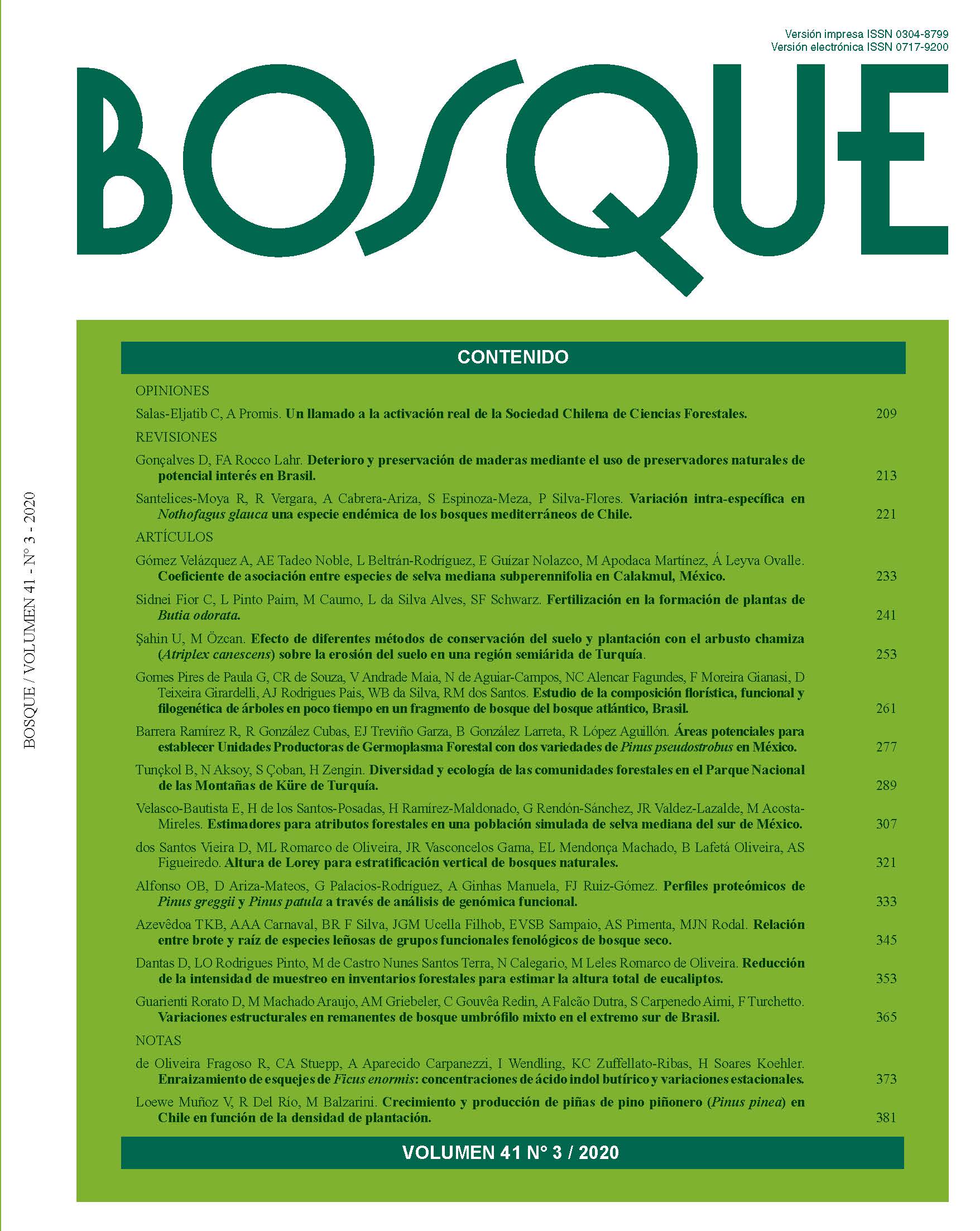Ficus enormis cuttings rooting: concentrations of indole butyric acid and seasonal variations
Conteúdo do artigo principal
Resumo
Plants producing fruits for many months of the year, or at times when few species bear fruits, are highly valuable for restoration of degraded ecosystems due to their ability to attract and support dispersing fauna. An example of this are native fig trees such as Ficus enormis. Thus, in view of the difficulties for F. enormis seedlings production, we aimed at developing a method of cuttings propagation by evaluating the rooting and root vigor of cuttings from a field clonal garden. The experiment was established between June/2015 and May/2016 at Laboratory of Forest Species Propagation of Embrapa Florestas, in Colombo-PR. We evaluated collection of cuttings during three seasons (winter, spring and summer) and application of concentrations of indole-3-butyric acid - IBA (0, 1000, 2000, 3000, 4000, 5000 mg L-1). After 45 days of cuttings establishment in an acclimatized greenhouse, the best results for rooting, number of roots, average length of the three largest roots per cutting and maintenance of leaves and shoots were found in spring and summer. Using plant regulator did not influence the rooting or root vigor of propagules; the time of the year was the predominant factor to induce rooting. The results show that the cuttings technique with propagules from a clonal garden is efficient for producing F. enormis plants and can serve as a basis for the species propagation.

